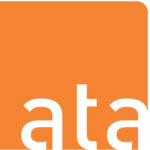Head lice are a common issue in childhood, especially among school-aged kids. While lice do not pose serious health risks, they can be uncomfortable and inconvenient for children and families alike. Knowing how to recognize lice, treat infestations, and prevent their spread can make a big difference in managing this annoying problem.
What Are Head Lice?
Head lice (Pediculus humanus capitis) are tiny parasitic insects that live on the scalp and feed on human blood. Although they are not dangerous, lice can cause itching, irritation, and distress, particularly in children. Lice spread easily through direct head-to-head contact, which is why young children, who often play in close proximity, are most affected.
Common Myths About Lice
Lice are often misunderstood, and there are a few common myths worth debunking:
- Lice are a result of poor hygiene: This is false. Lice do not discriminate based on cleanliness. In fact, they prefer clean hair, as it is easier for them to move through it.
- Lice can jump or fly: Lice cannot fly or jump; they move by crawling. They spread primarily through head-to-head contact.
- Pets can spread lice: Lice are specific to humans. Family pets cannot contract or spread lice.
Signs and Symptoms of Lice in Children
Children with lice may experience:
- Itching: Caused by an allergic reaction to lice bites.
- Tickling sensation: The feeling of something moving on the scalp.
- Red bumps or sores: Resulting from scratching.
- Visible lice or nits: Adult lice are tiny and fast-moving, making them hard to spot. However, nits (lice eggs) are often visible, especially around the ears and neck. They look like tiny, white, or yellowish specks attached to the hair shaft.
How to Check for Lice
If you suspect your child has lice, examine their scalp under good lighting:
- Part the hair and look close to the scalp for tiny, oval-shaped eggs that are tightly attached to the hair shaft.
- Use a fine-toothed comb or a lice comb to inspect small sections of hair at a time.
- Live lice can be harder to find, as they move quickly and are about the size of a sesame seed.
Treating Head Lice in Children
- Over-the-counter treatments: Many shampoos and lotions contain insecticidal ingredients like permethrin or pyrethrin, which kill lice on contact. Follow instructions carefully and avoid overuse to reduce the risk of resistance.
- Prescription treatments: If OTC treatments are not effective, speak with your child’s doctor. Prescription treatments like spinosad or ivermectin are effective alternatives.
- Manual removal: Using a fine-toothed lice comb on wet hair can help physically remove lice and nits. This method requires regular combing every few days for at least two weeks.
Tips for Managing Lice at Home
To prevent reinfestation or spreading lice to other family members:
- Wash bedding and clothing: Launder items your child has used within the last 48 hours in hot water and dry on high heat. Items that cannot be washed can be sealed in a plastic bag for two weeks.
- Vacuum: Vacuum floors, furniture, and car seats where your child has been recently. Lice can only live for 1-2 days off a human host, so deep cleaning is not necessary.
- Avoid sharing: Discourage sharing hats, combs, or pillows to reduce the risk of spreading lice among siblings or friends.
Preventing Lice in Children
While it is impossible to eliminate all risks, there are ways to reduce your child’s chance of getting lice:
- Teach no-sharing rules: Encourage your child not to share personal items like hats, scarves, hairbrushes, or headphones.
- Keep hair tied up: For children with longer hair, keeping it tied back in a ponytail or braid can help reduce the chance of contact with other kids’ hair.
- Regular checks: Periodically check your child’s hair for lice, especially if there is an outbreak at school or among friends.
When to See a doctor
Most lice cases can be managed at home, but consult a pediatrician if:
- Over-the-counter treatments are not effective, and you are unsure if the infestation is fully gone.
- Your child has an allergic reaction or skin irritation from the treatment.
Addressing the Stigma Around Lice
One of the biggest challenges of lice infestation is the stigma. Many parents feel embarrassed, but it is important to remember that lice infestations are common and have nothing to do with cleanliness or socioeconomic status. Lice do not carry disease, and with the right approach, they are entirely treatable.
If you have questions about head lice in your child when your pediatrician’s office is closed, contact our board-certified Pediatricians.


